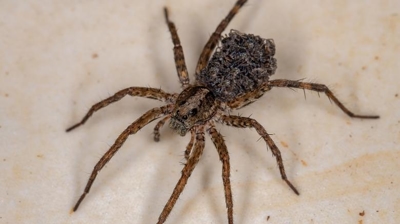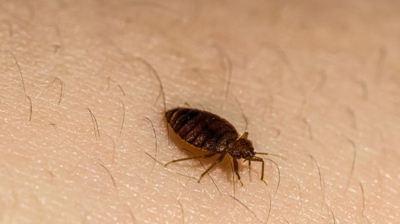
European Earwigs

Are European Earwigs Harmful?
European earwigs (Forficula auricularia) can be harmful under certain conditions, though their impact varies depending on the environment and their population density. While they are not inherently dangerous to humans or pets, they can be a significant nuisance and cause damage in both residential and agricultural settings:
Household Nuisance
European earwigs often enter homes in search of food, moisture, or shelter, especially during hot or dry weather. Issues they may cause indoors:
- Congregate in damp, dark areas like bathrooms, basements, or laundry rooms
- Emerge at night and crawl on surfaces, sometimes alarming homeowners
- Produce a foul odor when crushed
- Pinch if handled (using their cerci), though this is not medically harmful
Verdict: While they do not bite, sting, or transmit disease, their presence can be unsettling and persistent.
Harm to Plants and Gardens
European earwigs are omnivorous, and while they do eat small insect pests such as aphids, mites, and insect eggs, they also consume a variety of plant material, which can make them a problem in gardens and farms. They may:
- Chew holes in flower petals, leaves, and soft fruits (e.g., strawberries, peaches, apricots)
- Damage vegetable crops like lettuce, cabbage, and corn
- Feed on seedlings and tender shoots, stunting growth or killing young plants
Verdict: In large numbers, earwigs can cause considerable cosmetic and economic damage to plants and crops.
Myths and Misconceptions
The name "earwig" comes from the ancient (and false) belief that these insects crawl into human ears to lay eggs or burrow into the brain. This myth has no basis in scientific fact:
- Earwigs do not infest human ears.
- They are not parasitic.
- They do not pose any direct health risk to humans.
Verdict: Despite their intimidating appearance, they are not physically dangerous to people.
Learn more: Do European Earwigs Bite?
European Earwig Control
Hiring our professional pest control for European earwigs is highly recommended because these earwigs can be deceptively persistent and difficult to manage on your own. European earwigs are primarily nocturnal, hiding in cracks, mulch, under rocks, or in damp areas during the day. While they are mostly considered nuisance pests rather than dangerous, they can cause significant damage to gardens, flowers, and even soft fruits, and they can invade homes in large numbers. Here’s why our professional intervention is advantageous:
- Accurate Identification: Our professionals can distinguish European earwigs from other similar arthropods such as centipedes, millipedes, and silverfish. Correct identification is critical because different insects require different control methods. Misidentifying the pest could result in ineffective treatments.
- Targeted Treatment: Earwigs hide in cracks, crevices, and other difficult-to-reach areas. Our professionals have access to specialized insecticides, baits, and dusts that are designed to reach these hidden spots safely and effectively.
- Integrated Pest Management (IPM): Our professionals will not just spray chemicals—we assess your property to eliminate favorable conditions for earwigs, such as moisture buildup, leaf litter, and mulch placement. We may also implement physical barriers and recommend changes in landscaping or home maintenance to help prevent re-infestation.
- Long-Term Prevention: While DIY methods can reduce numbers temporarily, our professional treatment addresses the source of the problem. This reduces repeated infestations, which can be both frustrating and time-consuming.
- Safety and Compliance: Our professionals handle chemicals safely, ensuring treatments are applied in a way that minimizes risk to humans, pets, and beneficial insects. We also follow regulations regarding pesticide usage, which most homeowners may not be fully aware of.
- Efficiency and Cost-Effectiveness: While DIY solutions may seem cheaper, repeated ineffective treatments can add up in time, effort, and money. Our professionals often resolve infestations more quickly and prevent ongoing damage.
Hiring our professional pest control for European earwigs ensures the problem is addressed comprehensively, safely, and efficiently, protecting your home, garden, and peace of mind.
Learn more: How To Get Rid Of European Earwigs
What Do European Earwigs Look Like?
European earwigs (Forficula auricularia) have a distinctive and easily recognizable appearance:
- Size: About 1/2 to 5/8 inch (12–15 mm) long as adults.
- Color: Reddish-brown head and thorax; the abdomen is yellowish-brown with darker bands.
- Body Shape: Flattened, elongated body that allows them to slip into narrow spaces.
- Wings: They have two sets of wings—short, leathery forewings and membranous hindwings folded underneath—but they rarely fly.
- Pincers: Most distinctive feature is the forceps-like cerci (pincers) at the rear of the abdomen: Males have curved, robust pincers. Females have straighter, thinner pincers.
- Antennae: Long and thread-like, with multiple segments.
- Legs: Six legs, adapted for crawling and gripping surfaces.
European earwigs are nocturnal and prefer damp, dark areas. They are often found under mulch, stones, or in crevices and may enter homes during cooler months.
Where Are European Earwigs Found?
European earwigs (Forficula auricularia) are found in a wide range of habitats across North America, Europe, and many other temperate regions globally. Originally native to Europe, they were accidentally introduced to North America in the early 20th century and have since become well-established invasive pests in many regions.
Geographic Distribution
Global Presence
Native to: Most of Europe, parts of Western Asia, and North Africa
Introduced and established in:
- North America (most of the United States and southern Canada)
- Australia
- New Zealand
- Parts of South America
In North America, they are most commonly found:
- Along the Pacific Coast (California, Oregon, Washington)
- In the Northeast and Midwest (New York, Michigan, Illinois)
- Expanding into more central and southern states due to increased urbanization and climate adaptability
Local Habitats & Microenvironments
European earwigs prefer dark, damp, and cool environments, which means they are most commonly found:
Outdoors
- Under rocks, logs, mulch, leaf litter, and flower pots
- Inside compost piles or under woodpiles
- In the thatch layer of lawns and dense vegetation
- Around irrigated garden beds, especially where moisture is retained
- Under loose bark, especially on dying or fallen trees
They’re particularly abundant in:
- Irrigated landscapes
- Vegetable gardens
- Orchards, especially those with decaying fruit or heavy mulch layers
Indoors
European earwigs often enter homes when outdoor conditions become too dry, hot, or cold. Once inside, they are typically found in:
- Basements
- Laundry rooms
- Bathrooms
- Under sinks, behind baseboards, or in wall voids
- Garages, especially near doors and stored boxes
Indoor infestations often peak in late summer to early fall, when outdoor populations are at their highest and conditions begin to change.
What Do European Earwigs Eat?
European earwigs (Forficula auricularia) are omnivorous scavengers with a highly opportunistic and adaptable diet. Their feeding habits make them both beneficial and destructive, depending on the environment and available food sources:
Plant Material
They frequently feed on a wide range of soft and tender vegetation, especially:
- Seedlings and young shoots
- Leaves (especially of lettuce, cabbage, and corn)
- Flowers and petals (e.g., dahlias, marigolds, zinnias)
- Fruits and vegetables, including strawberries, raspberries, apricots, peaches, and tomatoes
- Grain crops, particularly corn silks, which can reduce pollination
Insects and Invertebrates
European earwigs are also predatory, particularly at night, feeding on:
Decaying Organic Matter
They are natural decomposers and will readily feed on:
- Dead plant matter
- Compost
- Rotting wood
- Fungus and mold
- Animal carcasses or decomposing insects
Household Food Sources (Occasionally)
Inside homes, they may nibble on:
- Crumbs
- Pet food
- Greasy residue
- Stored fruits or vegetables
While not a major pantry pest, they may be drawn to any moist organic material left out overnight.
Feeding Behavior
- Nocturnal foragers: They feed primarily at night and hide in dark, moist crevices during the day.
- Opportunistic eaters: Their diet depends on availability; they switch between plant, insect, and decaying material depending on conditions.
European Earwig Life Cycle
The life cycle of the European earwig (Forficula auricularia) follows a gradual metamorphosis, also known as incomplete metamorphosis, consisting of three main stages: egg, nymph, and adult:
Egg Stage
- Timing: Eggs are typically laid in late fall through early spring, depending on climate.
- Location: Females dig shallow chambers 2–3 inches underground and lay their eggs in protected, moist soil.
- Egg Count: A female lays 30 to 60 white or cream-colored eggs per clutch.
- Care: Unusually for insects, females guard and groom the eggs, protecting them from mold and predators until they hatch.
- Hatching Time: Eggs take 1 to 3 months to hatch, depending on temperature and soil moisture.
Nymph Stage
- Description: Nymphs resemble miniature adults but are wingless, lighter in color, and have underdeveloped cerci(pincers).
- Instars: They undergo 4 to 5 molts (instars) before reaching adulthood.
- Development Time: Nymph development takes 45 to 70 days, depending on environmental conditions.
- Feeding: Nymphs begin feeding soon after hatching, consuming soft organic material and small insects.
- During this stage, they are vulnerable to predators, often remain close to the nest initially, and highly active at night, just like adults
Adult Stage
- Mature Size: Adults grow to 12–15 mm long
- Color: Dark reddish-brown with fully developed pincers and short wings (though they rarely fly)
- Reproductive Maturity: Reached shortly after final molt
- Lifespan: Adults can live up to one year, often overwintering to reproduce the following season
- Most adults are present by mid-summer, peaking in late summer to early fall, which is when they are most often seen indoors or causing garden damage.
Seasonal Life Cycle Summary (Temperate Climates)
- Fall: Adults mate; females dig burrows and begin egg-laying
- Winter: Eggs overwinter underground; females guard eggs
- Spring: Eggs hatch; nymphs begin feeding and growing
- Summer: Nymphs mature into adults; peak population density and plant feeding
- Late Summer/Fall: Adults seek shelter indoors; breeding begins again
In warmer climates, multiple overlapping generations may occur in a single year, while in colder regions, typically only one generation per year is completed.
Reproductive Behavior & Maternal Care (Unique Trait)
European earwigs are one of the few insects that exhibit maternal care:
- The female cleans and guards the eggs to prevent fungal infections
- She remains with the newly hatched nymphs, protecting them for up to a week
- This increases early survival rates and helps explain their success as an invasive species

Hear From Our Happy Customers
-
"Great Communication"
Tech was on time, communication was great, and he accommodated my needs.
- Alonzo W. -
"Fantastic & Patient"
Jarvis was fantastic and patient. He answered my questions with an in-depth explanation and addressed all of my areas of concern. Would love for him to be my assigned tech going forward. Well done!
- Yonnette M. -
"Exceeds Expectations"
I can’t say enough positive things about this company... The tech that came out, Jarvis went above and beyond my expectations. Thank you guys, I will continue using your services.
- Jake M. -
"Professional & Considerate"
I’m pleased with Miche services. Jarvis came today. Professional and considerate. Thank you!
- Judy B. -
"Wonderful Service"
Wonderful service. Jarvis is great. Took care of everything I needed. Thank you!
- Henry P. -
"Very Knowledgeable"
The tech that arrived was courteous, professional, and very knowledgeable. He was Great.
- Uerial I.



